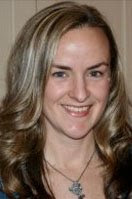I wish I could have been there to watch! From the posts, it looks like the women went out surprisingly slow, a poor showing in speed, but great in tactics, apparently. The men went out blazingly fast, on the other hand. Both converged into 10-12 runner packs. Then in the men, the decisive move came from Ethiopian Merga at the tactically precise point as they went into the first of the Newton hills, while the women waited for the long run-in from Boston College with Kara Goucher trying everything to burn off the competition and ultimately falling 2 places short. The final times in both races will not raise many eyebrows in Paris, Rotterdam or London. Both were fascinating tactically and thrilling for American followers of the sport. You have to go back to 1985 when Gary Tuttle was 2nd and Lisa Larsen Wiedenbach won to find Americans in the top 3 of both Boston races, so some consolation and sign of improvement. But when it came to the crunch Ethiopia and Kenya still delivered.
2:08:42 Merga, 2:09:32 Rono, 2:09:40 Hall officially.
No. Rono waves to the crowd to edge Hall's 2:09:40. 2:08:44 for Merga, Kosgie 2:32:16, Tune 2:32:17, Goucher 2:32:25.
As Hall sweeps down Boylston in 3rd, the question is can he catch Rono to better Goucher by 1.
Kosgei, who has previously won in Singapore, Prague and Paris, now takes her first World Marathon Major victory. Merga is cruising to the win, Goucher is visibly upset as she walks off with husband Adam, as Tune is receiving medical attention, flat on the finish line.
http://www.runnersworld.com/cda/microsite/0,8032,s6-239-506-0-0,00.html


